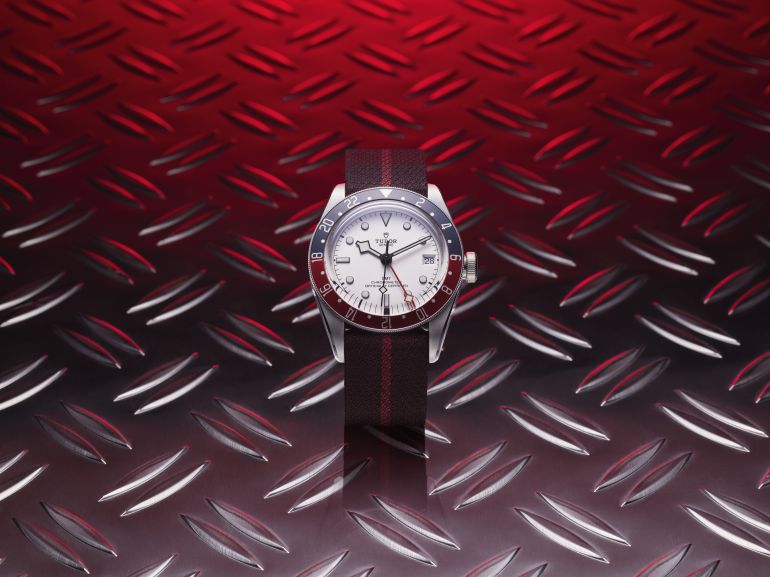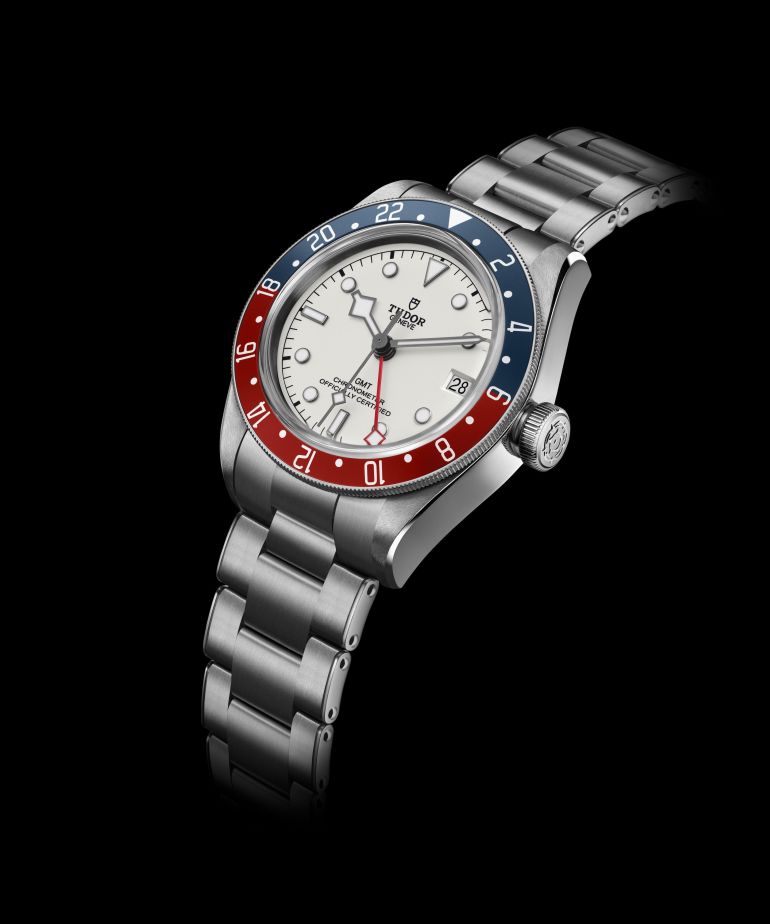In 2018, Tudor introduced the GMT function in its proprietary movements for the first time: an automatic, chronometer-certified by the Cosc, which allows the reading of multiple time zones. The movement debuted in the Black Bay collection, shaping a watch with an aesthetic that is the right compromise between vintage charm and contemporary style. The Black Bay line, in fact, is inspired by Tudor's past and history, particularly the diver's watches produced in the 1950s. Reinterpreted in a steel case with a burgundy and blue graduated rotating bezel, which betrays a kinship with its cousin Rolex's GMT-Master II.
After the black dial version, this year Tudor offers a new variant of the Black Bay GMT in steel with an opaline dial that, rather than being white, takes on subtle silver highlights. Giving it a matt, almost icy white/grey hue is a galvanic treatment, while the contours of the hour-markers are darkened to create a sharp contrast. All to the benefit of readability.
Otherwise, the substance does not change. The hands are of the Snowflake type, a distinctive feature of Tudor diver's watches since 1969, with Super-Luminova luminescent coating. The red Snowflake GMT hand completes one revolution in 24 hours and the graduated bezel features a double day/night colour zone in burgundy and blue.
The 41 mm-diameter case is made of steel and is water-resistant to 200 metres. The movement is the MT5652 calibre with a power reserve of around 70 hours and a balance spring made of silicon, a material that is totally insensitive to magnetic fields, which also improves running performance.
It is available with a steel bracelet, inspired by the riveted and tapered bracelets produced by the brand in the 1950s/60s, or with a black fabric strap with a burgundy band, made according to a traditional method on the 19th-century jacquard looms of the Julien Faure company in the St-Etienne region of France, which has been working with Tudor since 2010.








